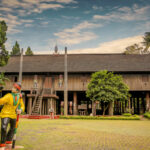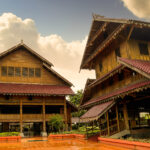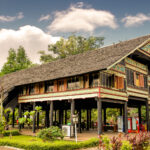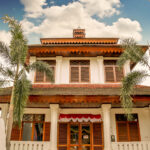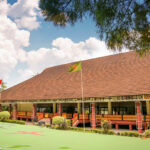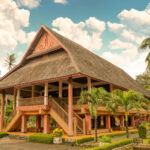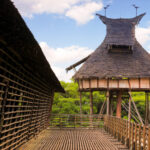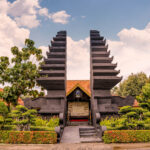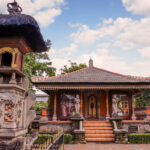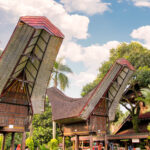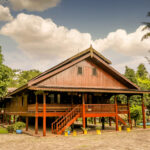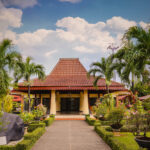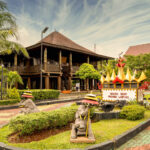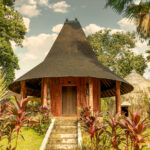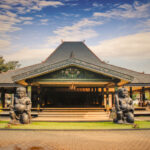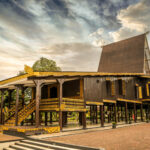Welcome to the Land of Sriwijaya!
In its golden era, from the 7th to the 12th century, this province served as the grand stage for the Sriwijaya Kingdom. Its name soared across the archipelago as the largest and most powerful maritime kingdom in Indonesia’s history.
South Sumatra is home to Lake Ranau, the second-largest volcanic lake in Indonesia after Lake Toba. It is also the birthplace of Pempek, a beloved traditional dish made from fish cake molded into various shapes and sizes, served with a spicy and tangy cuko (vinegar-based) sauce.
The charm of South Sumatra is brought to life at TMII through its culturally rich pavilion. Three traditional houses—Rumah Limas, Rumah Ulu, and Rumah Rakit—stand as testaments to the region’s diverse heritage.
Rumah Limas serves as a repository for South Sumatran cultural artifacts, including the royal seat (puade), traditional attire, songket textiles, wedding platforms, ceramics, and various crafts made from ivory, brass, and tin. Its architectural uniqueness lies in the tiered flooring structure known as Kekijing, where each level signifies a different function: the front floor is used for public audiences with the king or sultan, while the higher tiers are reserved for royal officials.
Rumah Ulu, once the home of inland villagers, reflects an agrarian lifestyle. Elevated on sturdy stilts to avoid wild animals, the upper section is used for living quarters while the space beneath stores household tools such as rice pounders (isaran), mortars (lesung), bamboo trays (nyiru), firewood, and enclosures for ducks or chickens.
Rumah Rakit (raft house), commonly found along the banks of the Musi, Ogan, and Komering rivers, is a humble wooden structure with shingled roofs. It features an open veranda for family gatherings and a side kitchen area. Beyond serving as a dwelling, the Rumah Rakit also functioned as a trading post for riverside communities.
DID YOU KNOW?
Palembang, the capital city of South Sumatra, is one of the oldest cities in Indonesia. This is evidenced by the Kedukan Bukit Inscription, discovered in 1926. The inscription records the founding of the Sriwijaya settlement on June 17, 683 AD, marking the city’s ancient roots.


